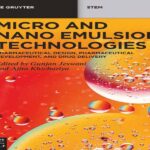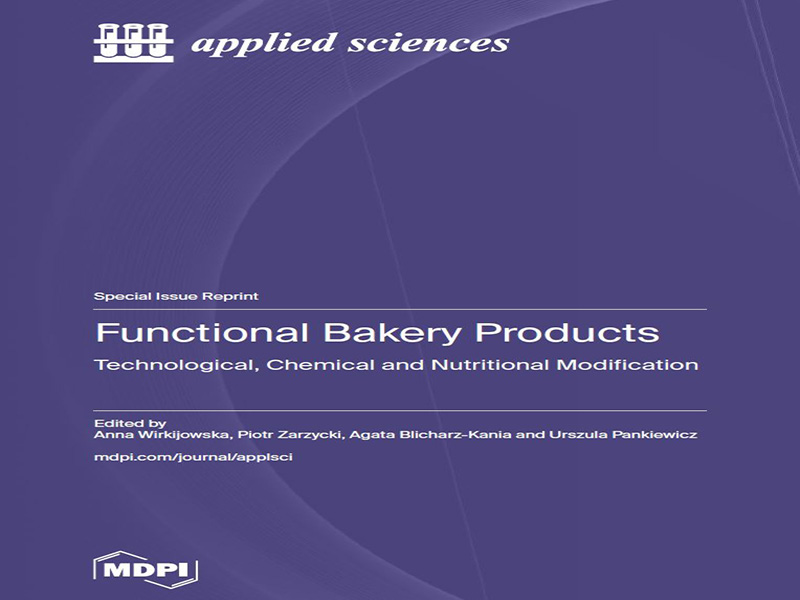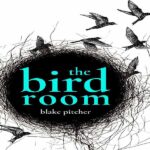- عنوان کتاب: Functional Bakery Products:Technological, Chemical and Nutritional Modification
- نویسنده: Anna Wirkijowska, Piotr Zarzycki
- حوزه: صنایع غذایی
- سال انتشار: 2025
- تعداد صفحه: 252
- زبان اصلی: انگلیسی
- نوع فایل: pdf
- حجم فایل: 5.99 مگابایت
افزایش علاقه مصرفکنندگان به فواید سلامتی غذاهای مختلف، منجر به توسعه محصولات غذایی جدید و ایجاد اصلاحاتی در دستور العملها و فناوریهای مورد استفاده برای تولید اقلام سنتی شده است. ادعاهای تغذیهای مانند “منبع …”، “غنی از …” و “سبک” به طور فزایندهای رایج شدهاند که نشان دهنده تمرکز بیشتر بر فواید سلامتی است [1،2]. روندهای تحقیقاتی فعلی بر پیشرفتهای تغذیهای و فناوری منعکس شده در محصولات مبتنی بر غلات، از جمله ترکیب افزودنیهای جدید و فرآیندهای تولید با هدف دستیابی به تشخیص برچسب پاک تأکید دارند [3،4]. غذاهای کاربردی بستری ارزشمند برای معرفی مواد جدید فراهم میکنند که مزایایی را از دیدگاههای اقتصادی، تغذیهای، فناوری و زیستمحیطی ارائه میدهند. این رویکرد نه تنها ارزش غذایی را افزایش میدهد، بلکه به کمبودهای غذایی در جمعیت نیز میپردازد. علاوه بر این، در پاسخ به چالش جهانی ضایعات مواد غذایی، تحقیقات گستردهای برای بررسی پتانسیل استفاده از محصولات جانبی صنایع غذایی – مانند محصولات فرآوری میوه، سبزیجات یا روغن – و همچنین جریانهای آسیاب کم مصرف غنی از بخشهای فیبر انجام شده است. توسعه راهحلهای فناورانه برای ادغام این محصولات جانبی در محصولات با کیفیت بالاتر منجر به افزایش ارزش اقتصادی آنها، بهبود بهرهوری منابع و پشتیبانی از اصول بدون ضایعات و پیشبرد اقتصاد چرخشی خواهد شد [5-7]. این روندها همچنین به محصولات نانوایی که معمولاً از آرد یا کنجاله مشتق شده از انواع غلات و غیر غلات تهیه میشوند، گسترش مییابد. بسته به مواد تشکیلدهنده موجود، محصولات نانوایی میتوانند به عنوان منابع عالی کربوهیدراتهای پیچیده (از جمله نشاسته و فیبر غذایی)، پروتئینها، ویتامینها، مواد معدنی و مواد شیمیایی گیاهی با فواید خاص برای سلامتی عمل کنند. اقلام نانوایی مانند نان، کوکیها، غلات صبحانه، بیسکویتها و کلوچهها نقش محوری در رژیم غذایی مدرن دارند و فرصتهای بیشماری را برای افزایش ارزش غذایی، عملکرد و همسویی با ارزشهای سلامتی و پایداری فعلی ارائه میدهند [8-11]. یکی از استراتژیهای رایج برای افزایش ارزش غذایی محصولات نانوایی، جایگزینی جزئی یا کامل آرد گندم است. این رویکرد به ویژه برای محصولاتی که آرد گندم ماده اصلی آنها است، مانند نان گندم تصفیه شده (کم استخراج) مؤثر است. آرد تصفیهشده، بسته به میزان استخراج آن، با سطوح پایین فیبر غذایی، پروتئین، مواد معدنی و ترکیبات زیستفعال مشخص میشود. علاوه بر این، پروتئینهای موجود در آرد گندم ناقص هستند و فاقد برخی اسیدهای آمینه ضروری، به ویژه لیزین، هستند که قابلیت هضم آنها را محدود میکند [12-15]. نان، یکی از پرمصرفترین محصولات نانوایی، به طور متوسط حدود 250 گرم در روز مصرف سرانه دارد [16] و به دلیل دسترسی و ارزش غذایی آن، نقش حیاتی در تغذیه انسان ایفا میکند. نان گندم، رایجترین نوع نان، قرنهاست که یک ماده اصلی غذایی بوده است. این نان از طریق محتوای بالای کربوهیدرات (70-80٪ ماده خشک) منبع انرژی قابل توجهی را فراهم میکند و همچنین پروتئین (10-14٪ ماده خشک) و مواد معدنی (0.5-0.8٪ ماده خشک) را نیز تأمین میکند. با این حال، محتوای فیبر غذایی در نان گندم سفید نسبتاً کم است، معمولاً در حدود 2-3٪ [17]. برای رفع این محدودیتهای تغذیهای، روند رو به رشدی در استفاده از مواد اولیه غیرسنتی، از جمله فرآوردههای جانبی با پروتئین بالا از صنایع غذایی گیاهی، در نان و سایر محصولات نانوایی که به طور سنتی با استفاده از آرد گندم سفید ساخته میشوند، وجود دارد [18]. در حالی که جایگزینی جزئی آرد گندم با یک ماده دیگر میتواند ترکیب شیمیایی محصولات پخته شده را بهبود بخشد، این روش چالشهای قابل توجهی را نیز ایجاد میکند، به ویژه در حفظ ویژگیهای کیفی محصول نهایی که برای پذیرش مصرفکننده بسیار مهم هستند. آرد گندم به دلیل محتوای گلوتن، یک پروتئین ساختاری ضروری برای ظاهر، ساختار خرده نان و بافت کلی بسیاری از محصولات پخته شده، منحصر به فرد است. ماتریس گلوتن نقش مهمی در تعیین خواص رئولوژیکی خمیر ایفا میکند و جایگزینی آرد گندم بدون به خطر انداختن کیفیت محصول را چالش برانگیز میکند. غنیسازی مواد اولیه اغلب باید در مقادیر محدود استفاده شود، زیرا افزودن بیش از حد میتواند بر کیفیت خمیر، ریزساختار و بافت محصول نهایی تأثیر منفی بگذارد [19]. تولید خمیر با خواص مطلوب هنگام فرموله کردن محصولات نانوایی بدون گلوتن، چالش برانگیزتر میشود. این موضوع با توجه به افزایش جهانی شیوع بیماری سلیاک که در سالهای اخیر به نرخ سالانه 21.3 مورد در هر 100000 نفر در بین کودکان و 12.9 مورد در هر 100000 نفر در بین بزرگسالان رسیده است، اهمیت ویژهای دارد [20]. بیماران مبتلا به بیماری سلیاک اغلب با دسترسی محدود به محصولات مناسب مواجه هستند که اغلب با کیفیت تغذیهای و حسی پایینتر در مقایسه با محصولات حاوی گلوتن مشخص میشوند. این امر چالشهای خاصی را نه تنها در دستیابی به کیفیت مطلوب خمیر، بلکه در تضمین کیفیت نیز ایجاد میکند.
Increasing consumer interest in the health benefits of various foods has driven the development of new food products and prompted modifications to the recipes and technologies used for the production of traditional items. Nutritional claims such as “source of. . .”, “rich in. . .”, and “light” have become increasingly common, reflecting a stronger focus on health benefits [1,2]. Current research trends emphasize the nutritional and technological advancements reflected in cereal-based products, including the incorporation of novel additives and production processes aimed at achieving clean-label recognition [3,4]. Functional foods provide a valuable platform for introducing new ingredients, offering benefits from economic, nutritional, technological, and environmental perspectives. This approach not only enhances nutritional value but also addresses dietary deficiencies in the population. Moreover, in response to the global challenge of food waste, extensive research has been conducted to explore the potential for utilizing by-products from the food industry—such as those from fruit, vegetable, or oil processing—as well as underutilized mill streams rich in fiber fractions. Developing technological solutions to integrate these by-products into higher-quality products will lead to an enhancement in their economic value, improve resource efficiency, and support zero-waste principles, advancing a circular economy [5–7]. These trends also extend to bakery products, which are typically made from flour or meal derived from a variety of both cereal and non-cereal grains. Depending on the ingredients present, bakery products can serve as excellent sources of complex carbohydrates (including starch and dietary fiber), proteins, vitamins, minerals, and phytochemicals with specific health benefits. Bakery items such as bread, cookies, cereal bars, biscuits, and muffins play a central role in the modern diet, representing numerous opportunities to enhance their nutritional value, functionality, and alignment with current health and sustainability values [8–11]. One common strategy with which to enhance the nutritional value of bakery products is the partial or complete substitution of wheat flour. This approach is particularly effective for products in which wheat flour is a primary ingredient, such as refined (low-extraction) wheat bread. Refined flour, depending on its extraction rate, is characterized by low levels of dietary fiber, protein, minerals, and bioactive compounds. Additionally, the proteins in wheat flour are incomplete, lacking certain essential amino acids, particularly lysine, limiting their digestibility [12–15]. Bread, one of the most widely consumed bakery products, has an average per capita consumption of around 250 g per day [16] and plays a vital role in human nutrition due to its accessibility and nutritional value. Wheat bread, the most common type of bread, has been a dietary staple for centuries. It provides a substantial energy source through its high carbohydrate content (70–80% dry matter) and also supplies protein (10–14% dry matter) and minerals (0.5–0.8% dry matter). However, the dietary fiber content in white wheat bread is relatively low, typically at around 2–3% [17]. To address these nutritional limitations, there is a rising trend of incorporating non-traditional raw materials, including high-protein by-products from the plant food industry, into bread and other bakery products traditionally made using white wheat flour [18]. While partially substituting wheat flour with another ingredient can improve the chemical composition of baked goods, this method also poses significant challenges, particularly in maintaining the quality characteristics of the final product, which are critical for consumer acceptance. Wheat flour is unique because of its gluten content, a structural protein essential for the appearance, crumb structure, and overall texture of many baked goods. The gluten matrix plays a crucial role in determining the rheological properties of dough, making it challenging to replace wheat flour without compromising product quality. Enriching raw materials often need to be used in limited amounts, as excessive additions can negatively impact the dough quality, microstructure, and texture of the final product [19]. Developing dough with desirable properties becomes even more challenging when formulating gluten-free bakery products. This issue is particularly significant considering the rising global incidence of celiac disease, which has reached annual rates of 21.3 cases per 100,000 individuals among children and 12.9 per 100,000 individuals among adults in recent years [20]. Patients with celiac disease often face limited access to suitable products, which are frequently characterized by lower nutritional and sensory quality compared with their gluten-containing counterparts. This presents specific challenges, not only in achieving the desired dough quality but also in ensuring that the final product meets appropriate nutritional standards [21]. Recent studies in the field of functional bakery products have increasingly focused on incorporating unconventional ingredients and innovative technologies to enhance the nutritional, sensory, and technological properties of baked goods. Examples include the use of industrial by-products, such as fruit pomace, vegetable processing waste, and underutilized mill streams rich in fiber fractions, as well as ingredient modifications like inulin, microalgae, or mushroom powders. Additionally, enriching products with glutenfree or clean-label alternatives as a strategy has gained attention. Such strategies aim not only to improve the health benefits of bakery products but also to align with sustainability trends by minimizing waste and promoting eco-friendly practices in the food industry.
این کتاب را میتوانید از لینک زیر بصورت رایگان دانلود کنید:
Download: Functional Bakery Products




































نظرات کاربران